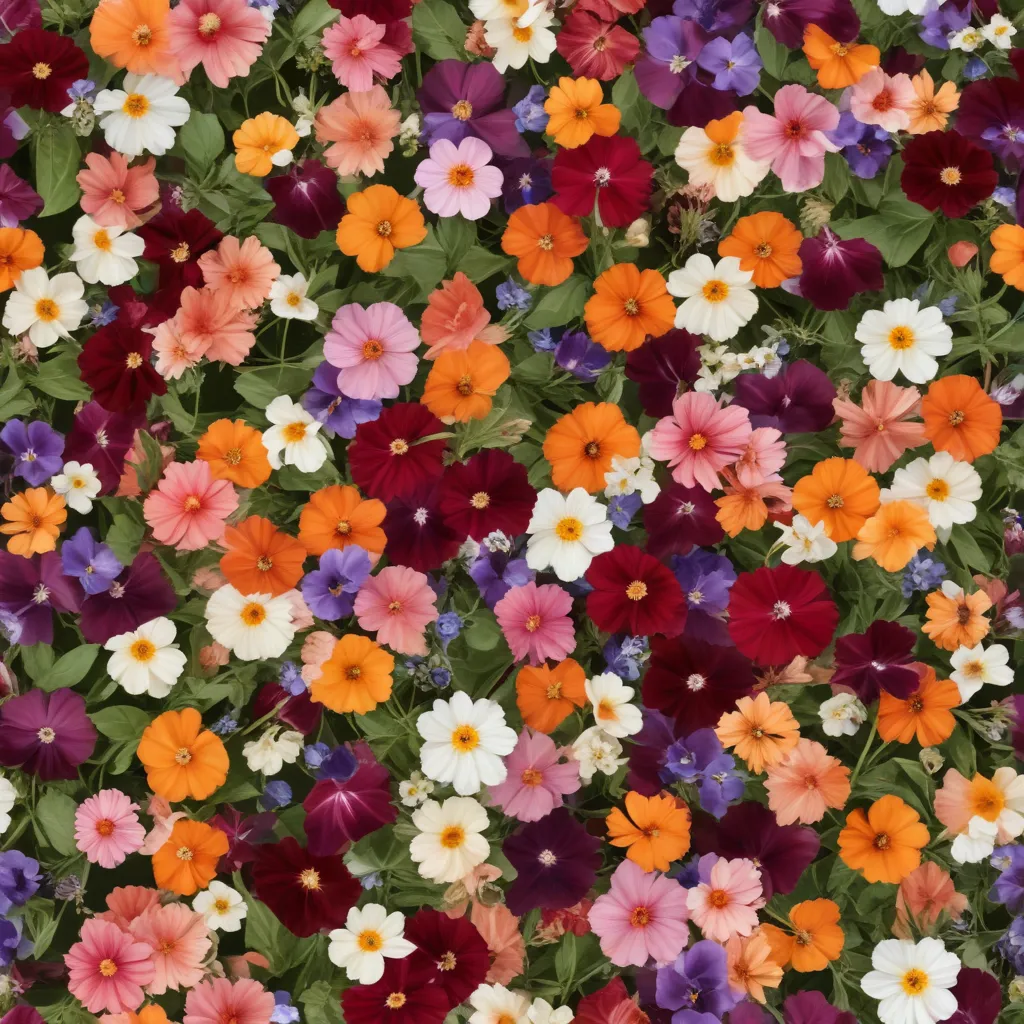
Gardening enthusiasts and wine aficionados alike can find common ground in the art of cultivating edible flowers. These vibrant blooms not only add visual charm to landscapes but also unlock a world of culinary possibilities, particularly when it comes to crafting exquisite wine cocktails. At the Wine Garden Inn, we’ve embraced this intersection of horticulture and mixology, inviting our guests to explore the myriad ways in which homegrown edible flowers can elevate their drinking experience.
Edible Flower Cultivation
Flower Selection for Wine Cocktails
The journey to creating captivating flower-infused wine cocktails begins with thoughtful selection of the right edible blooms. Some particularly suitable candidates include borage, with its cucumber-like flavor; nasturtium, offering a peppery kick; chrysanthemum, whose delicate sweetness lends itself beautifully to syrups and teas; and bachelor’s button, whose vivid hues can provide a striking visual contrast when used as a garnish.
Flower Growing Techniques
Successful cultivation of these culinary flowers requires attention to detail. Deadheading spent blooms regularly encourages continuous flowering, while leaving a few behind benefits pollinator populations. Providing the appropriate growing conditions, such as well-draining soil and ample sunlight, ensures robust plants that will thrive and reward you with an abundant harvest.
Culinary Flower Preparation
Once the flowers have been carefully harvested, proper handling is crucial to preserve their delicate flavors and aromas. Gently rinsing the blooms, allowing them to wilt for a few hours, and then lightly crushing them with your hands can help release their essential oils, which will imbue your wine cocktails with captivating floral notes.
Flavor Profiles of Edible Flowers
Floral Aromas and Tastes
The diverse world of edible flowers offers a symphony of flavors to explore. Pineapple sage, for instance, delivers a tropical aroma that can transport you to a island oasis, while coconut thyme imparts a delicate, earthy essence with hints of the tropics. Purple shiso, on the other hand, tantalizes the palate with its unique blend of basil, mint, and cinnamon.
Flower-Infused Wine and Spirits
Incorporating these floral essences into your wine and spirits creations can elevate the drinking experience in unexpected ways. A May wine crafted with the fragrant sweet woodruff captures the essence of springtime, while a Berliner weisse beer flavored with waldmeister (sweet woodruff) syrup offers a refreshing, herbaceous twist.
Pairing Flowers with Cocktail Ingredients
The flavors of edible flowers can also be thoughtfully combined with other cocktail components to create harmonious and captivating flavor profiles. A Negroni garnished with a nasturtium bloom, for example, balances the drink’s boldness with a hint of peppery intrigue. Likewise, a mojito infused with pineapple sage introduces a tropical dimension that complements the lime and mint.
Flower-Infused Wine Cocktails
Classic Wine Cocktail Recipes
Building upon the foundational elements of timeless wine cocktails, the addition of edible flowers can lend a delightful and visually stunning twist. A Spritz featuring a chrysanthemum syrup or a Kir Royale adorned with bachelor’s button blooms offers a refreshing and captivating take on these beloved classics.
Signature Flower-Inspired Cocktails
Beyond reinterpreting the classics, the creative possibilities are endless when it comes to crafting signature flower-infused wine cocktails. A Coconut Thyme Gin Old Fashioned, as masterfully executed by our friend Elana from Stir & Strain, exemplifies the harmonious marriage of floral, herbal, and spirit-forward flavors.
Garnishing Drinks with Edible Blooms
The visual allure of edible flowers cannot be overstated, and incorporating them as garnishes can elevate the presentation of your wine cocktails. Whether delicately arranging a borage blossom atop a frothy Pimm’s Cup or scattering bachelor’s button petals over a chilled Rosé Sangria, these colorful accents not only captivate the eye but also infuse the drink with an intriguing hint of flavor.
Gardening for Culinary Flowers
Choosing Suitable Growing Conditions
Cultivating edible flowers for your wine cocktails requires an understanding of their preferred growing conditions. While some, like borage and nasturtium, thrive in full sun and poor soil, others, such as sweet woodruff, prefer partial shade and nutrient-rich, moist environments. Carefully selecting the right flowers for your available garden space is key to ensuring a bountiful and flavorful harvest.
Flower Bed Design and Maintenance
Designing dedicated flower beds or integrating edible blooms into your existing landscape can be a rewarding endeavor. Grouping complementary flowers together, like basil and mint, can foster beneficial growing relationships. Regular maintenance, including deadheading and occasional weeding, will keep your garden thriving and ready to supply your culinary adventures.
Harvesting and Preserving Edible Blooms
At the Wine Garden Inn, we take great pride in our estate-grown produce, including the vibrant edible flowers that adorn our guest rooms and inspire our culinary team. When harvesting these delicate blooms, a gentle touch is essential to preserve their delicate flavors and aromas. After rinsing and lightly wilting the flowers, we may choose to dehydrate or infuse them into syrups, tinctures, or other preserves to extend their usefulness throughout the year.
The art of cultivating edible flowers and incorporating them into wine cocktails is a testament to the synergy between the natural world and the art of mixology. At the Wine Garden Inn, we embrace this intersection, inviting our guests to indulge in a sensory experience that celebrates the beauty, flavor, and versatility of homegrown botanicals. Whether you’re a seasoned gardener, a passionate wine enthusiast, or simply someone who appreciates the finer things in life, we invite you to join us on this journey of discovering the delights that bloom at the crossroads of horticulture and oenology.
